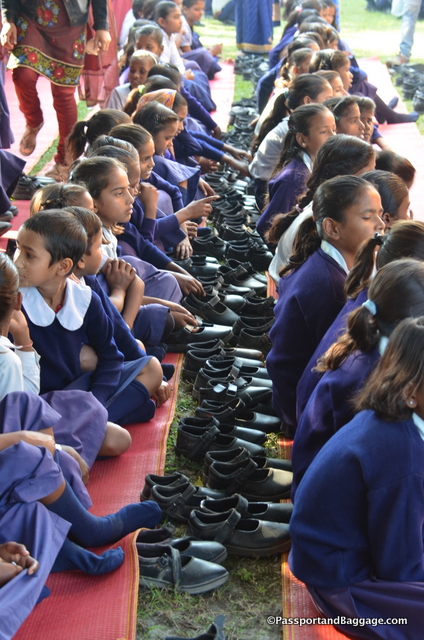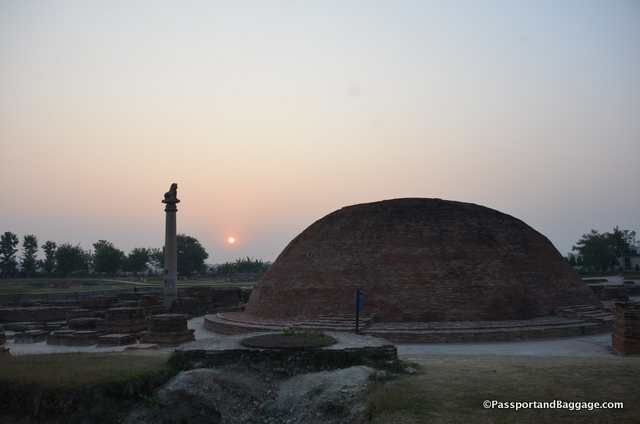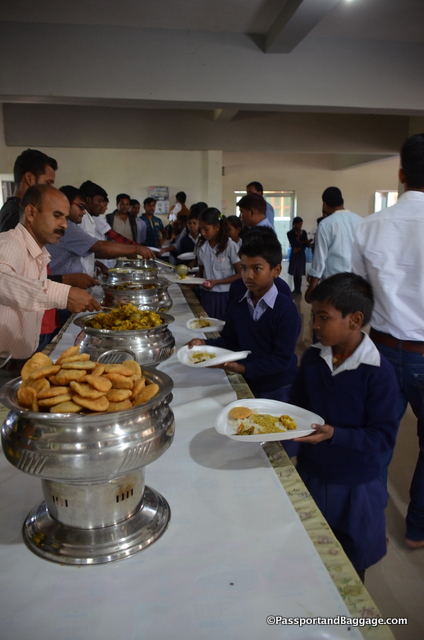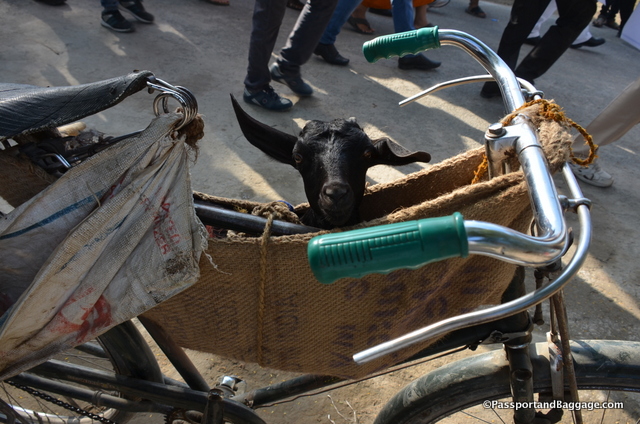November 2017

The relics were removed from the very center of the stupa by archaeologists in the 1800s. These are considered to be actual remains of the Buddha. The remains are housed in an understated room in the Patna Museum.
Vaishali is on the pilgrimage route for Buddhists for many reasons, but the two most important are that Vishali received part of Buddha’s remains and therefore there was a stupa here.
The other important reason is the fact that Buddha’s stepmother was the first Buddhist nun, and she was granted that right in Vaishali.
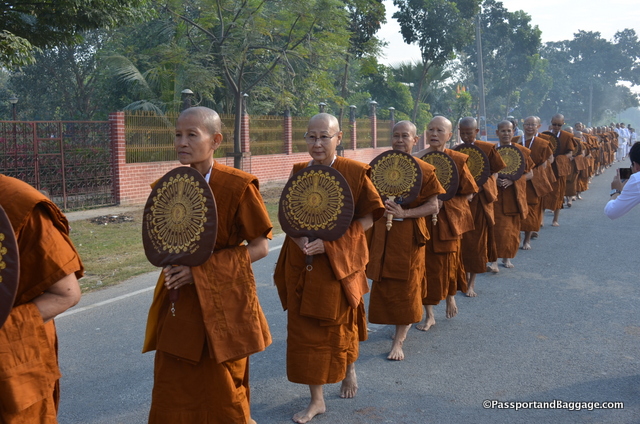 The term for a nun is Bikkhuni, and I have mentioned before that this, like most religions in the world, is a bit chauvinistic.
The term for a nun is Bikkhuni, and I have mentioned before that this, like most religions in the world, is a bit chauvinistic.
The nuns are usually left in the background, and I have often seen them serve the monks food before they will eat themselves.
However, I was standing with one of our Burmese monks and he ran into a classmate nun from college, and he treated her with the utmost respect, kindness and seemed genuinely happy to see her.
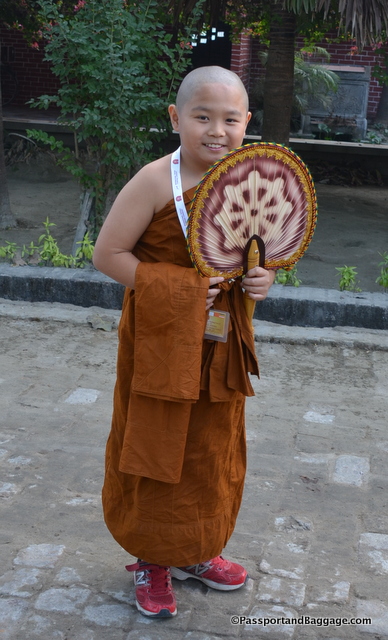
Jayden is a member of the Thai temple in Vaishali. Once a year he becomes a monk for a week. He has become my buddy, and I really enjoy his company.
The nuns carry fans, this is a holdover from a long-ago tradition. When a monk or nun gives a Dharma talk they should hold a fan in front of their face, this is a statement of “no ego”. The nuns are the only group that continues this tradition, and I have found it is mainly the Thai nuns that do. The nuns tend to be considerably more serious in their devotion, however, they are absolutely the first to smile, and say hello.
Vaishali is truly a one-horse town, and yet there are three large tour buses in front of our hotel. They seem to roll in around 8:00 at night and are gone by noon the next day. Buddha pilgrimage tours is a bigger business than one would think, and most I have seen have a lot of nuns and or monks with them. Vaishali is in Bihar, the poorest state in India, and it is sad to see the vendors lined up along the route to the stupa and yet no more than 100 or 200 people come a day, it is a real tough way to make a living.
The last day of chanting was supposed to be followed by a Dharmayatra, or a walk in the footsteps of Buddha through the holy sites. The head monk must have forgotten because he talked for almost three hours, as we all watched the sun begin to set.
He stopped and a few of the monks and I literally ran to the bus climbed on and asked the driver to take us to Ananda’s stupa.
As we are watching the sun go down we confront the perfect Indian bureaucrat. He insists on seeing our passports because each country gets charged a different amount. Now seriously, where does he expect the monks to keep their passports in their robes? As I ran back to the bus to get mine, Javana solved all the problems with his negotiating skills and we all got in.
It was such a touching moment for me. Despite these being Buddhists, they really know nothing about the sites, why they are visiting or the history of the area.
I have touched on this before, that monks tend to sequester themselves in monasteries and learn the minutest detail about the Sutras, but lack the basic knowledge of the big world around them.
I began to talk about what we were looking at and Javana had everyone gather round as I lectured. I was so touched, because they really had no idea, and yet they asked questions and laughed hysterically at my descriptions. It is hard to sit all day and chant, then get on a bus, drive 1 or 2 kilometers and look at another stupa and explain that at one time this entire area was one monastery. Now it is farmland with mud huts and the sense of scale and the grandeur is lost in cow patties and fenced fields.
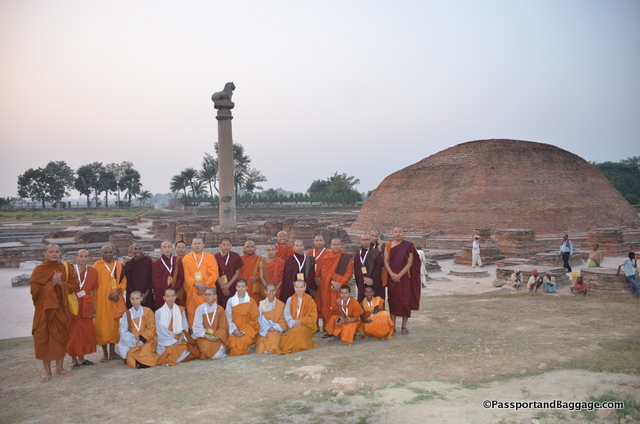
Despite being very, very kind to the nuns, the discussion on the bus was the fact that the last Buddhist council deemed nuns could not be on the same rug as monks during chanting ceremonies.
Javana even gathered some of the nuns, and they asked for the books I was reading and how they could learn more.
I tried to explain how I was so excited to be where millions of people had walked over 3000’s of years and the quality of discourse that must have taken place at this place in Buddha’s time. In that time this was a great kingdom, with considerable wealth. These are just not concepts I could get across, but I did sort of pass on how I felt so small in this world when you think of the great people that went before you. This did penetrate and started some interesting side conversations.
It was also interesting to discuss the fact that this pillar is now not necessarily considered to be an Ashokan pillar. It is thought that it preceded Ashoka, and may have even been the seed for Ashoka’s pillars. There is a considerable discourse on the subject, way too complicated to get into when there is such a massive language barrier, but I could show them how this is the only pillar with a square, rather than round, abacus.
The other thing we were looking at was Ananda’s stupa. Ananda was Buddha’s best friend and lifelong companion/helper. The monks had absolutely no idea that Ananda was buried in that stupa, it was quite the light bulb moment for all of them.
They began to ask me about “stories” and whether or not I believed that Buddha’s body parts were in certain places. My answer was simply to say that until I have a time machine and can go witness these events myself, I only can listen to the stories and say I can never say for certain what is the truth. I got a Burmese word in response that I think is something like okay, okay, okay, which was, I think, their way of saying, clever answer.
These are the moments that make this entire trip worth it. I learn so much from the monks and nuns but am always fascinated as to their rather small worlds.
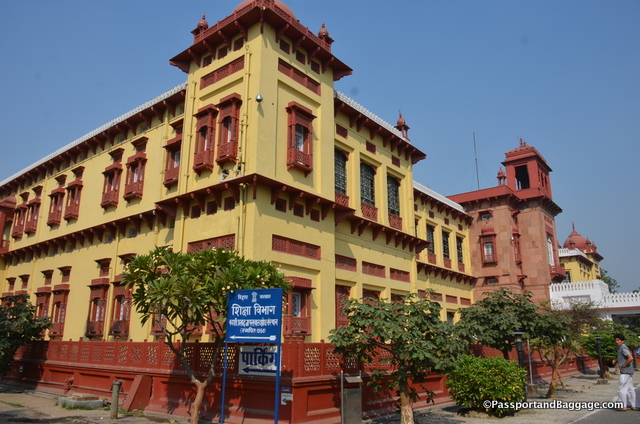
The Patna Museum was founded in 1917 and its building was constructed in the Mughal style in 1928. The collection is so very sad, not only in its lack of substance but in its complete and utter lack of care and upkeep.
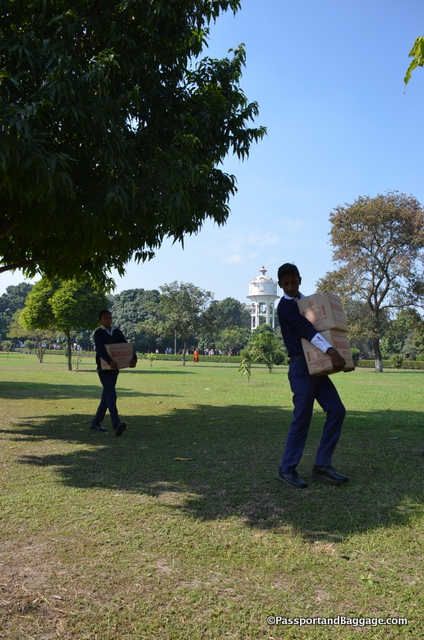
It goes without saying that trash is a serious problem. Bottled water is prolific, and so are the empty containers
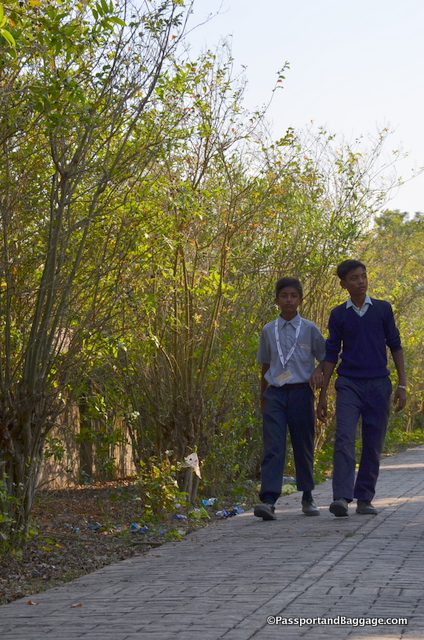
I asked these two boys to collect the trash on the lawn. They did a lovely job, and promptly threw it all in the bushes on the other side of the walkway.
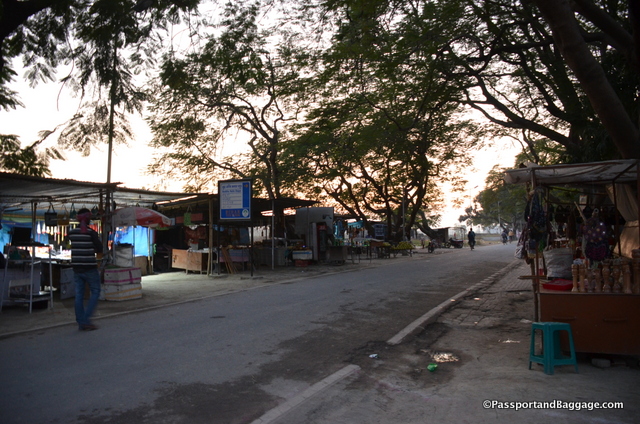
There are about three major blocks to Vaishali, this is the area outside of the stupa, the three blocks all look like this.
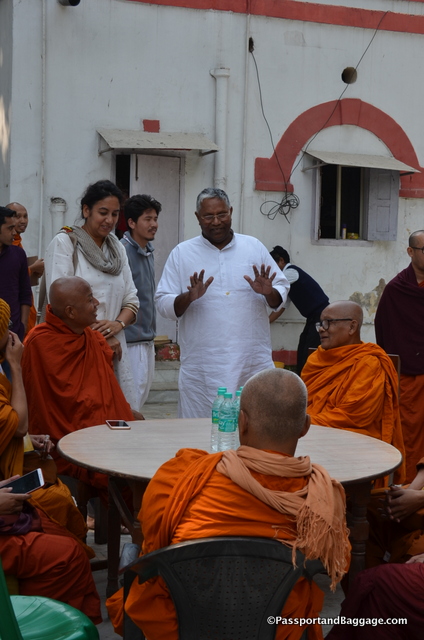
On our way out of Vaishali, we were treated to lunch at the home of the Speaker of the Senate for the State of Bihar Vijay Kumar Choudhary. He is a very noble man with very lofty goals for the voiceless.
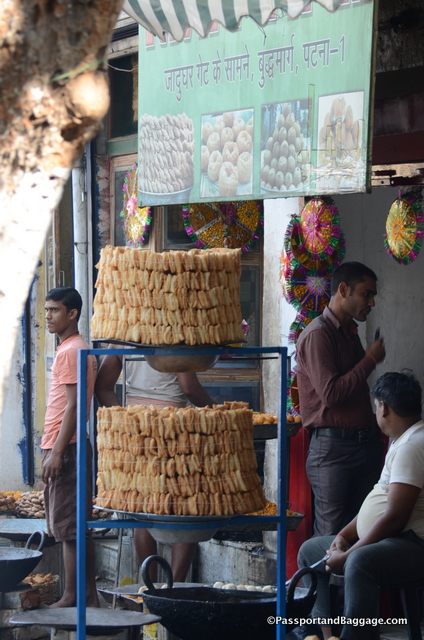
These pastries were the hit of the day in Patna. They are essentially fried phyllo dough drenched in honey syrup. The monks couldn’t get enough, and neither could I.
*
This wraps up the first part of this pilgrimage. We return to Bodh Gaya to begin preparation for the next ceremony. The monks are happy to return home to their own beds and food they can stomach, I agree, the food has been repetitive and boring, but I still have a long way to go to get good food. For now, I will be happy with hot water and internet.



